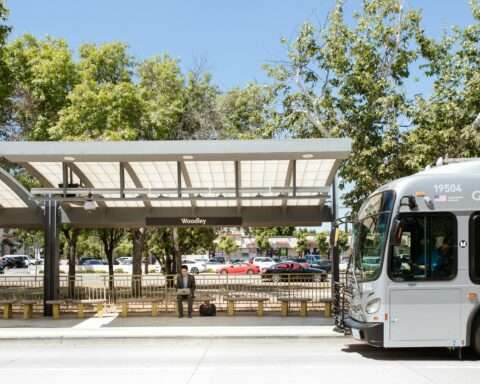A new study from the University of Michigan has curbed the high hopes of widespread adoption of green hydrogen as a fuel source for all modes of transportation. The research, published in the journal Joule in August, suggests that although green hydrogen may not be the silver bullet for decarbonizing the entire transportation sector, it still has potential in certain heavy-duty applications.
“We have an urgency to decarbonize transportation, given the adverse impacts we are seeing from climate change,” Greg Keoleian, a senior author of the paper and co-director of U-M’s MI Hydrogen initiative said in a press release. “We examine where hydrogen can play a role by looking at the energetics to help guide deployment along with other factors such as cost, fueling time, range, and safety.”
Unlike grey or blue hydrogen, which are derived from fossil fuels, green hydrogen is created through electrolysis. In this method, electricity generated from renewable sources such as solar, wind or hydropower is used to split water (H2O) into its constituent elements: hydrogen and oxygen. The resulting hydrogen is considered “green” because its production doesn’t emit greenhouse gases. This makes green hydrogen a promising fuel in the transition to zero-emissions fuel. However, electrolysis takes large amounts of energy.
The study, led by researchers from the Center for Sustainable Systems and Michigan Engineering, computed the total system energy efficiency of using green hydrogen directly to power planes, trains, automobiles and ships. The results show that the system inefficiencies during hydrogen production, storage, transportation, dispensing and use lead to about 80-90% energy loss of the initial electrical input needed to produce the fuel in the first place.
The researchers found that electric-powered transport is about three to eight times more efficient than using hydrogen. This finding suggests that for light-duty vehicles, battery electric options are significantly more energy-efficient than hydrogen fuel cell vehicles.
However, the study doesn’t dismiss hydrogen entirely. Tim Wallington, author on the report, said, “green hydrogen should be used strategically in heavy-duty road, rail, aviation, and marine transportation where electric alternatives are constrained by load and range.”
Hydrogen has been gaining traction in the transportation sector. In San Francisco, the world’s first commercial passenger ferry powered entirely by hydrogen fuel cells launched in July. In the aviation sector, airplane manufacturer Airbus is conducting feasibility studies to develop hydrogen fuel capabilities at major airports, including Hartsfield-Jackson Atlanta International Airport and George Bush Intercontinental Airport in Houston. These studies are part of Airbus’s ZEROe program, which seeks to manufacture the world’s first hydrogen-powered commercial aircraft by 2035.
The Michigan study, however, suggests that such endeavors should be approached with cautious planning to ensure they are energy efficient. The study measured the energy intensity of each hydrogen pathway for different modes of transportation. The results show that, even with hydrogen, rail and shipping are the most efficient modes, while aircraft are the least efficient due to the energy required to keep the weight aloft.
These findings come at a time when the U.S. government is making significant investments in hydrogen technology. The 2022 Inflation Reduction Act has kickstarted a flurry of investment in hydrogen fuel, which proponents say is versatile enough to replace gasoline or jet fuel. The Department of Energy has granted $1.2 billion to develop a hydrogen fuel supply chain on the Gulf Coast. Although the fuel has potential, the Michigan study suggests that policymakers and industry leaders should carefully consider where to deploy hydrogen technology for maximum
Photo by Mattie Blume













